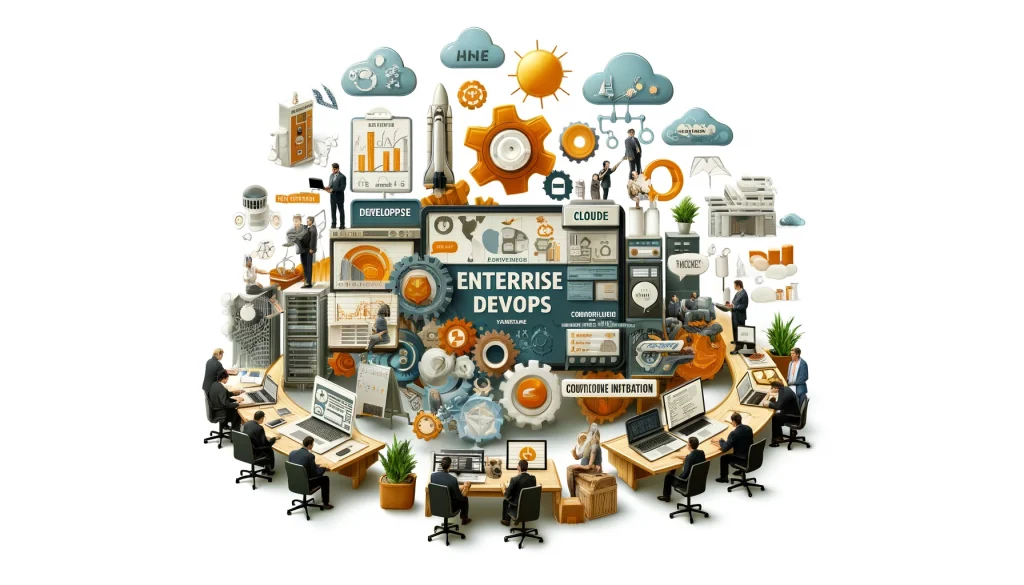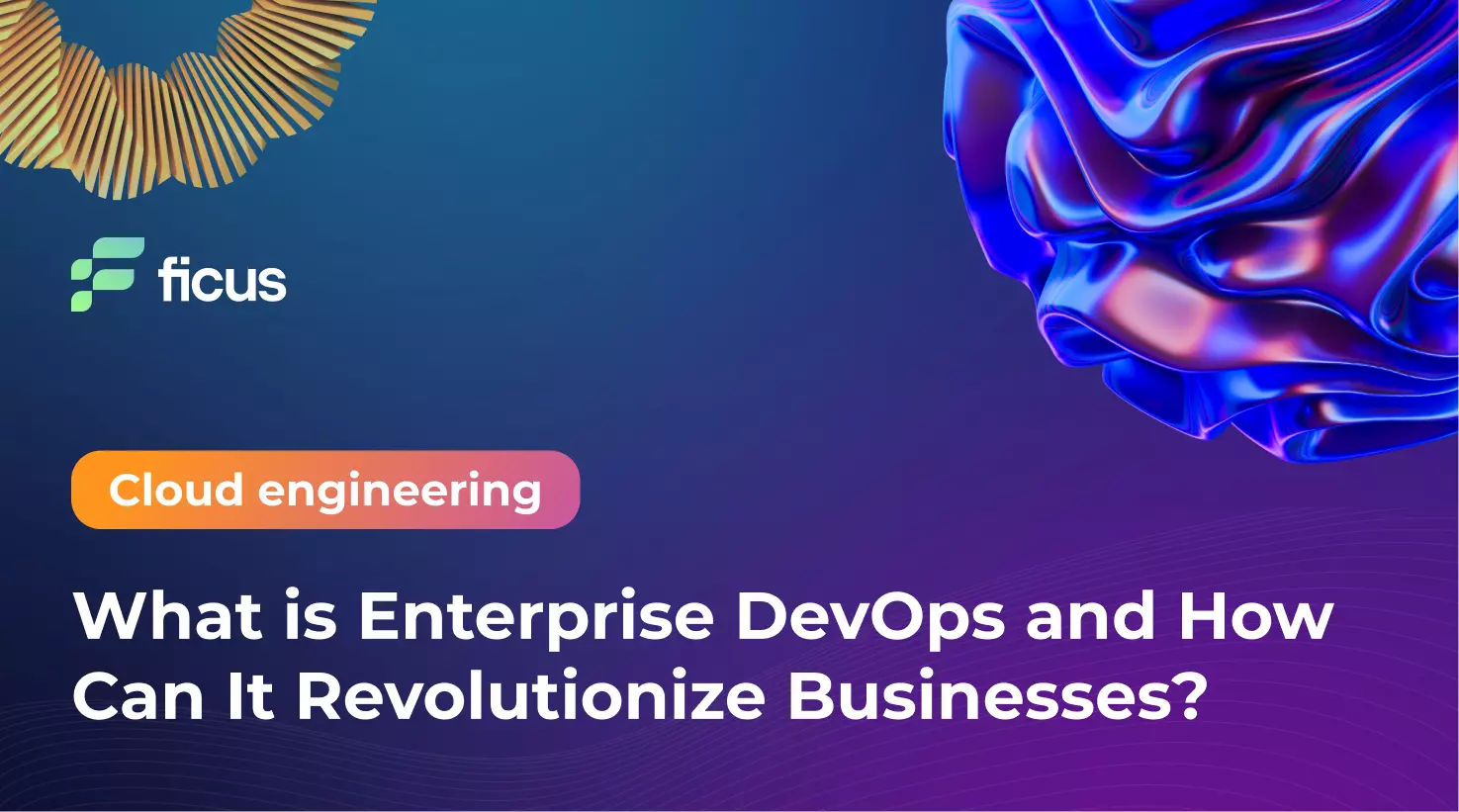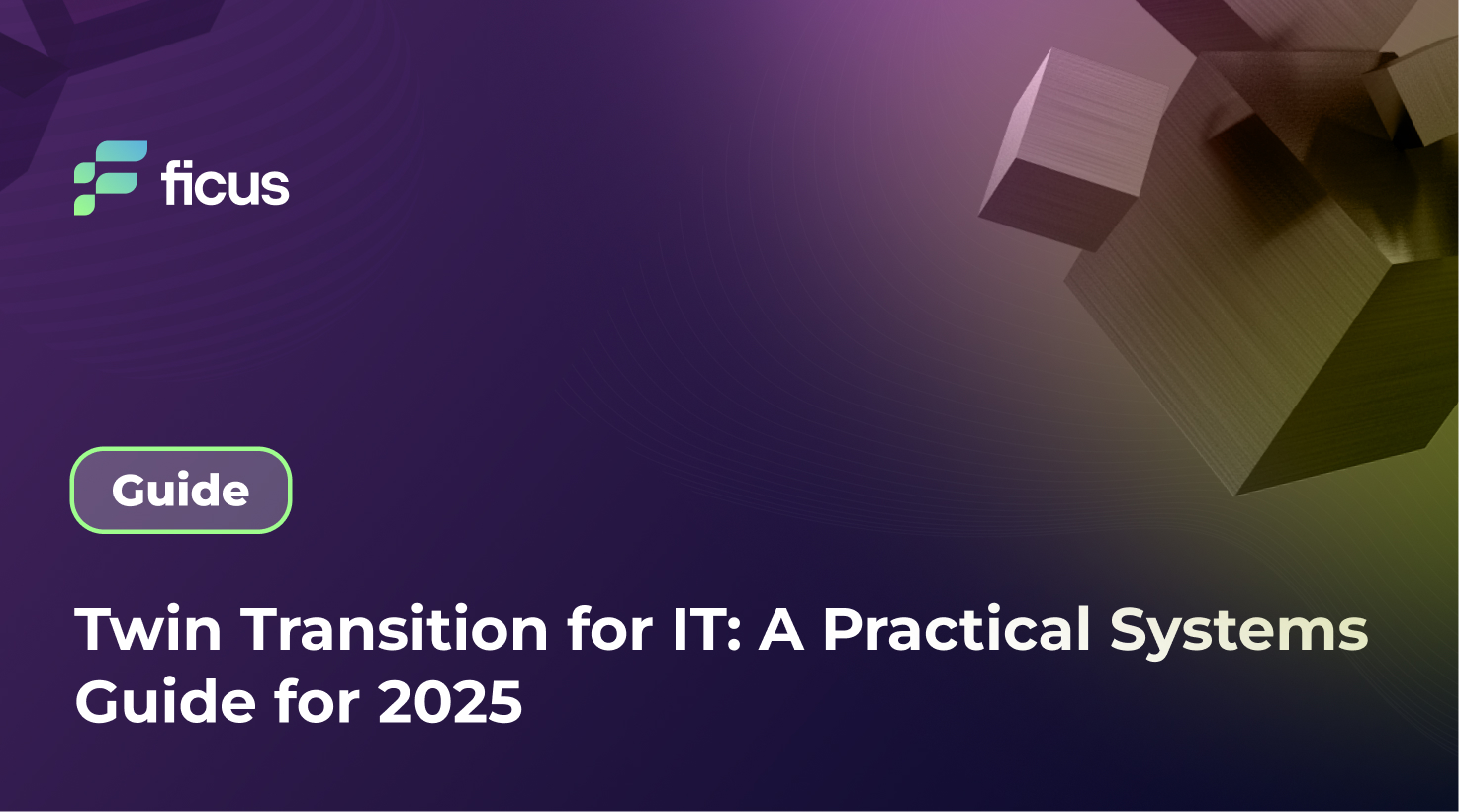Scaling DevOps in enterprise environments, especially large and regulated ones, presents unique challenges. Monolithic systems, legacy software, and manual workflows slow down adaptation. A common misconception is that enterprise DevOps suits only startups or cloud-native giants, but it benefits companies of all sizes. Establishing a DevOps culture in a company with established practices can seem daunting, but it’s achievable. This article explores enterprise DevOps and how release managers can adapt it to meet these challenges, ensuring faster, quality software delivery and ultimately providing more value to customers.
- Continuous Deployment and Delivery (CI/CD) in enterprise DevOps.
- Essential DevOps tools: CI/CD, Infrastructure as Code, containerization.
- Best practices: automation, collaboration, and alignment for successful DevOps transformation.
What is Enterprise DevOps?
Enterprise DevOps adapts to the changing needs of larger companies, focusing on scalability and security. While smaller companies often maintain static technology, large enterprises need dynamic solutions to handle increased demand. DevOps in enterprise emphasizes horizontal and vertical scalability and integrates DevSecOps for enhanced security, ensuring compliance with regulatory standards. Techniques like “shift-left” are applied to improve code integrity through early verification and validation, although this is more complex in large organizations due to their size and diverse practices. Enterprise DevOps helps manage these challenges, ensuring efficient and secure software development.

Enterprise DevOps Methodology
Enterprise DevOps addresses the unique challenges of large organizations, such as managing monolithic applications, diverse tech stacks, and complex dependencies. By implementing standardized processes and custom tooling, enterprises can achieve consistent deployment, improved production uptime, and streamlined operations. The following sections delve into these key aspects and their impacts.
Monolithic and Legacy Applications
Businesses often retain older systems, known as monolithic or legacy applications, to support backend or UI issues. These applications, typically written in outdated programming stacks, are crucial for enterprise DevOps. Integrating DevOps in enterprise environments requires careful consideration of these systems, as many modern developers may not be familiar with the legacy technology. Effective DevOps strategies must address these challenges, ensuring that aged systems are seamlessly incorporated into the overall infrastructure while maintaining efficiency and reliability. Understanding and managing these legacy applications is essential for successful large-scale DevOps implementation.
Tech Diversity
Today’s development teams and designers often require technologies and environments tailored to their projects. With multiple teams using various programming languages and techniques requiring different approaches, enterprise DevOps must support this tech diversity. Tools selected for DevOps in enterprise environments need to accommodate multiple stacks and facilitate automation across these varied settings. This flexibility ensures that development processes remain efficient and effective, regardless of the diverse technological requirements of different organizational projects. Enterprise DevOps can enhance collaboration and productivity across all teams by embracing tech diversity.
Upstream Dependencies
When diverse teams utilize each other’s components, a single disruptive change can trigger a chain reaction. Recognizing this is crucial for smooth operations. Overly complex dependencies can waste significant time during development, especially during disruptions. Tools like dependency charts are useful, but automated regression testing is also essential. To mitigate these issues, Enterprise DevOps teams employ automated QA processes, such as “Smoke” and “Sanity” tests. These practices help ensure that changes do not break existing functionality, maintaining stability and efficiency across the development pipeline.
Production Uptime
In enterprise DevOps, automation extends beyond initial implementation, ensuring continuous uptime for critical services and applications. Advanced tools go beyond simple alerts, offering self-monitoring, self-correction, and automatic scaling capabilities. These features streamline operations by simplifying control through end-to-end automation. With DevOps in enterprise environments, teams can rely on robust systems that proactively manage performance, swiftly address issues, and dynamically adjust resources as needed. This proactive approach to automation enhances reliability and optimizes resource utilization, ultimately leading to improved service availability and uninterrupted operations for businesses.
Multiple and Hybrid Environments
Enterprise DevOps faces the challenge of navigating multiple environments encompassing cloud and on-premises resources. This necessitates adept management tools tailored to hybrid cloud setups, accommodating diverse infrastructures. Furthermore, the flexibility to leverage multiple clouds enhances adaptability and efficiency. Fortunately, existing DevOps tools offer solutions for these complexities. Enterprises deploying DevOps in the enterprise must prioritize selecting tools that support seamless integration across varied environments, ensuring optimal resource utilization and operational agility. Embracing such tools facilitates the efficient management of hybrid and multi-cloud ecosystems, enhancing the efficacy of enterprise DevOps practices.
Custom Enterprise DevOps Tooling
In enterprise DevOps, tailored solutions often become necessary to address unique challenges. The DevOps team might craft custom code or scripts to accommodate legacy systems or specific requirements. Safeguarding these bespoke tools is imperative, not solely for future reference but also for collaborative efforts. Storing these scripts in a repository facilitates teamwork, enabling task allocation within sprints akin to traditional development teams. This integration reflects DevOps’s adaptability and collaborative nature in the enterprise, promoting efficiency and cohesion in addressing organizational needs.
DevOps is not a goal, but a never-ending process of continual improvement.
Jez Humble
Benefits of DevOps in Enterprise Development
Adopting DevOps in enterprise environments leads to enhanced automation, accelerated development cycles, and improved quality assurance. By fostering a culture of collaboration and continuous improvement, enterprises can achieve higher ROIs, increased stability, and greater flexibility in adapting to market demands. These advantages are further explored below.
Better automation and innovation
Better automation and innovation are integral aspects of DevOps in enterprise development. By automating repetitive tasks such as testing, deployment, and monitoring, teams can streamline workflows and free up time for creative pursuits. This enables a culture of innovation where teams can experiment, iterate, and deliver value to customers more efficiently. Automation also reduces the risk of human error, ensuring that software releases are consistent, reliable, and of high quality. Overall, better automation drives continuous improvement and fosters a competitive edge in the market.
Accelerated development and deployment
Accelerated development and deployment, facilitated by enterprise DevOps, revolutionizes software delivery. Development cycles shrink from months to days through streamlined processes and automated pipelines. This agility empowers teams to respond to market demands swiftly, pushing updates and features at unprecedented speeds. The result? Enhanced customer satisfaction, competitive advantage, and market relevance. Moreover, rapid deployment allows businesses to seize opportunities swiftly, adapt to changing trends, and capitalize on emerging technologies.
Enhanced quality and stability
Enhanced quality and stability are hallmark benefits of enterprise DevOps. By integrating testing and quality assurance into the development pipeline, teams can identify and rectify issues early on, ensuring robust and reliable software releases. Automated monitoring and incident response further bolster stability, minimizing downtime and maximizing user satisfaction. This relentless focus on quality fosters customer trust and strengthens the enterprise’s competitive position in the market.
Increased stability and flexibility
Another advantage of enterprise DevOps is Increased stability and flexibility. Organizations can minimize disruptions and ensure consistent performance across environments by establishing robust processes and automation. This stability enhances reliability and instills confidence among users and stakeholders. Additionally, enterprise DevOps promotes flexibility by enabling rapid adaptation to changing market conditions and business requirements. Whether scaling resources to meet demand spikes or pivoting to new technologies, enterprises equipped with DevOps have the agility to navigate complexities and stay ahead of the competition. The combination of stability and flexibility forms the foundation for sustainable growth and innovation today.
Higher ROIs
Higher ROIs are a direct result of adopting enterprise DevOps practices. Organizations can achieve significant cost savings and revenue gains by optimizing processes, automating repetitive tasks, and accelerating delivery cycles. With faster time-to-market and improved product quality, enterprises can capture market opportunities more effectively, leading to increased profitability. Moreover, DevOps in enterprise promotes resource efficiency and scalability, allowing businesses to maximize the value of their investments. Whether reducing operational expenses, increasing customer retention, or driving innovation, the financial benefits of DevOps within an enterprise are undeniable. Аdopting DevOps enhances operational efficiency and yields tangible returns that fuel long-term growth and success.
DevOps tools and technologies for enterprise development
In enterprise DevOps, selecting the right tools facilitates streamlined workflows, automated processes, and consistent environments. Understanding DevOps tooling maximizes efficiency and supports achieving business objectives.
Continuous integration and delivery (CI/CD) tools
Continuous Integration and Delivery (CI/CD) tools are integral to enterprise DevOps practices. These tools automate the build, test, and deployment processes, ensuring that code changes are seamlessly integrated and delivered to production environments. CI/CD tools promote collaboration among development, operations, and quality assurance teams by enabling frequent and reliable releases. This streamlined workflow enhances efficiency, accelerates time-to-market, and improves software quality. With CI/CD tools, organizations can iterate rapidly, respond to customer feedback promptly, and stay competitive in today’s fast-paced business environment. Embracing CI/CD as part of DevOps in enterprise empowers teams to deliver value consistently and reliably, driving business success and innovation.
Infrastructure as Code (IaC) tools
Infrastructure as Code (IaC) tools allow teams to define and manage infrastructure using code, enabling consistency, scalability, and repeatability across environments. With IaC, infrastructure configurations become version-controlled, facilitating collaboration and reducing manual errors. This approach enhances agility, as infrastructure can be provisioned and updated programmatically, aligning with the agile principles of DevOps in the enterprise. Organizations can automate deployment processes, enforce compliance, and accelerate delivery cycles by treating infrastructure as code.
Containerization and orchestration tools
Containerization and orchestration tools enable packaging applications and dependencies into lightweight, portable containers, ensuring consistency across development, testing, and production environments. Container orchestration tools, such as Kubernetes, automate containerized applications’ deployment, scaling, and management, simplifying operations and enhancing scalability. By leveraging containerization and orchestration, organizations can achieve faster delivery cycles, improve resource utilization, and enhance overall agility. These tools align with the principles of DevOps in the enterprise, promoting collaboration, automation, and continuous delivery. In essence, containerization and orchestration empower teams to build, deploy, and manage applications more efficiently, driving innovation and success in today’s competitive business.
Ready to revolutionize your business with Enterprise DevOps?
Contact UsBest Practices for Enterprise DevOps Transformation
Implementing best practices is imperative for a successful enterprise DevOps transformation. These practices streamline processes, promote collaboration, and ensure alignment between development and operations teams. By following established guidelines, organizations can mitigate challenges, accelerate adoption, and achieve tangible results in DevOps.
Boost Confidence in Business
Embracing enterprise DevOps transforms business operations, aligning everyone involved in the lifecycle and clarifying roles and responsibilities. This fosters confidence among coworkers, who see themselves as integral to the transition process. Clearly defined roles and deployment timelines instill a sense of ownership and accountability, boosting overall confidence. Providing teams with the necessary ecosystems for testing during development further enhances confidence levels. Starbucks’ adoption of DevOps in 2015 illustrates this, as it improved business confidence and efficiency. By assigning clear roles and responsibilities, Starbucks reduced cycle time by 74%, showcasing the transformative impact of embracing DevOps in enterprise environments on business operations and confidence levels.
Minimize Operational Friction
Collaboration between development and operations teams is essential in maximizing enterprise DevOps efficiency, but conflicts hinder progress. Equipping teams with real-time collaboration tools minimizes communication gaps, streamlining workflows and reducing operational friction. Etsy’s adoption of DevOps in 2009 illustrates this, as conflicts among its teams impeded deployments. Etsy improved implementation rates by assigning clear roles and responsibilities to each team and fostering a sense of ownership. This approach, advocated by Mr. Rembetsy, former VP of Technological Operations, facilitated smoother collaboration, enabling Etsy to deploy 60 times daily. Such initiatives exemplify how embracing DevOps in enterprise environments can enhance operational efficiency and productivity.
Setup Compliance Policies and Processes
Establishing robust compliance policies and processes is an integral part of a successful enterprise DevOps implementation, as it ensures that the team follows standard procedures throughout the development lifecycle.
Policy-based approaches are common in DevOps methodologies and cover areas such as data security, development practices, language standards, and operational governance. Adobe’s transition to DevOps illustrates the importance of such policies. Initially relying on a monolithic architecture, Adobe faced integration challenges as it expanded its product portfolio. By implementing DevOps in an enterprise environment, Adobe has moved to microservices, containers, and CI/CD pipelines, optimizing its processes. With the Adobe Experience Platform Pipeline, strict rules were established to facilitate a smooth transition and increase overall efficiency.
Configuration Management
Configuration management is integral for enterprise DevOps, encompassing setup and change management. It entails automating, monitoring, and controlling server and system configurations to ensure high-quality software delivery. DevOps facilitates continuous integration and delivery by standardizing release processes. Among the top tools in this domain:
- Chef: Used for automating architecture setup and server management.
- Ansible: An open-source tool for provisioning and configuring cloud infrastructure via code.
- Puppet: Enables automated management of software configurations across various platforms like IBM mainframes, Cisco switches, and Mac OS.
Continuous-Integration
Continuous integration facilitates the seamless merging of code modifications into the main code base, increasing its quality and stability. By automatically constructing and running software, enterprise DevOps ensures that bugs are quickly identified and fixed. This iterative process improves software performance and speeds up subsequent versions’ release and integration. Notable tools for continuous integration include:
- Jenkins: Using Java-based open-source servers, Jenkins automates continuous integration processes, streamlining workflows within enterprise DevOps.
- GitLab: Known for its focus on continuous integration, GitLab accelerates software development by enabling engineers to do their jobs efficiently.
- Bamboo: Bamboo’s continuous integration server makes it easy to create delivery pipelines, accelerating software application development processes.
Continuous Deployment and Delivery
Continuous deployment automates the entire process of deploying code into production and delivering the final software, saving valuable time between development and delivery. Once all Quality Assurance (QA) tests have passed, the code is instantly updated, ensuring that clients receive the latest updates as changes are made to the application.
Notable tools for automating continuous deployments include:
- AWS CodeDeploy: A highly scalable deployment service from AWS, AWS CodeDeploy ensures the continuous release of new app versions without errors.
- Octopus Deploy: This automated deployment server simplifies the deployment process for Java, ASP.NET, Node.js, and other applications.
- DeployBot: DeployBot enables the creation and distribution of code through consistent processes, supporting both manual and automatic deployment.
Continuous delivery streamlines the creation and launch of enterprise-level software, emphasizing continuous improvement and integration to ensure the delivery of high-quality software.
Popular tools for continuous delivery include:
- Buddy: An intelligent CI/CD tool, Buddy simplifies DevOps initiation by building, testing, and deploying software through delivery pipelines.
- CircleCI: Focused on automating the user delivery pipeline, CircleCI facilitates rapid development and deployment of software.
- TeamCity: From JetBrains, TeamCity enables the creation, implementation, and delivery of various software projects, including those developed in Visual Studio and written in Java.
Continuous-Testing
By consistently adhering to automation and testing practices, developers can quickly identify and rectify inaccuracies before software deployment. Automated testing offers greater reliability and reduces the likelihood of errors compared to manual testing.
Here are some tools that facilitate continuous testing:
- Selenium: Widely used for automating testing across various platforms, Selenium focuses primarily on testing websites and web applications.
- Applause: This tool provides real-time, honest feedback on the reliability of digital experiences, enabling the more efficient release of high-quality products.
- Blazemeter: An open-source, enterprise-ready continuous testing tool, Blazemeter is ideal for load testing, performance testing, and functional testing.
Continuous-Monitoring
Continuous monitoring involves employing processes, methods, and tools to assist, estimate, and track the progress of each phase in the development and operational lifecycle. This ensures that software performs effectively, efficiently, and reliably as it transitions from development to production. Here are some effective tools for continuous monitoring:
- AWS CloudWatch: AWS CloudWatch aggregates, authenticates, and consolidates data from AWS resources onto a unified platform, enabling the tracking of application performance.
- Akamai mPulse: Akamai mPulse is a real-time analytics tool that empowers DevOps teams to access and analyze user behavior on their websites.
- Dynatrace: Dynatrace offers a unified platform for monitoring the entire stack of DevOps technologies and ecosystems, streamlining monitoring processes.
Continuous monitoring is crucial in an enterprise DevOps setup. It ensures that software functions optimally throughout its lifecycle, enhancing performance, reliability, and efficiency.
Challenges in an Enterprise
- Complex Coordination: Coordinating efforts across diverse development teams can be challenging, particularly when teams are segmented for different projects.
- Legacy System Compatibility: The rigidity of traditional systems poses obstacles to the seamless integration of DevOps in the enterprise. However, employing modern alerting technologies for continuous monitoring can alleviate some of these challenges.
- Regulatory Hurdles: Compliance and accountability requirements may hinder agile organizational changes. Aligning with the principles of enterprise DevOps necessitates adaptable roles, such as ITOps engineers understanding developers’ work and vice versa.
- Skills Gap: Not all engineers possess the requisite skills for implementing DevOps in enterprise settings. To bridge the gap, additional hiring or training initiatives may be required.
These issues need to be addressed to increase the efficiency of software development and administration and optimize productivity and competitiveness in today’s fast-paced business environment.
Final Words
Enterprise DevOps represents a transformative approach to software delivery and operations, integrating development and IT operations within large-scale organizational environments. It streamlines processes, fosters collaboration, and accelerates innovation, enabling businesses to adapt and thrive in today’s competitive landscape. Ficus Technologies specializes in implementing enterprise DevOps solutions tailored to the unique needs of businesses, offering expertise in automation, continuous integration, and infrastructure as code. By leveraging Ficus Technologies’ services, organizations can streamline their DevOps practices, improve efficiency, and unlock new opportunities for growth and success.
DevOps and Enterprise DevOps share the core principles of collaboration, automation, and continuous delivery, but they differ in scale and scope. DevOps typically focuses on small to mid-sized teams or projects, emphasizing agility and efficiency in software development and deployment. In contrast, Enterprise DevOps extends these practices to large-scale organizational environments, addressing complexities such as legacy systems, diverse technologies, and regulatory requirements. It emphasizes scalability, governance, and integration across multiple teams and departments. While both aim to streamline processes and drive innovation, Enterprise DevOps adapts these principles to meet the unique challenges of enterprise-level operations.u003cbru003e
Enterprise DevOps increases business agility by fostering collaboration, automation, and continuous delivery across large organizational environments. By eliminating the isolation between development and operations teams, it enables faster decision-making, accelerated software delivery, and rapid response to market changes. Automation of manual processes streamlines workflows, reducing the time to market for new features and updates. Continuous delivery practices ensure that software is delivered reliably and consistently, allowing companies to quickly iterate and stay ahead of the competition. Overall, Enterprise DevOps enables organizations to quickly adapt to changing customer needs, regulatory requirements, and market dynamics, thereby increasing their agility and competitive advantage.u003cbru003e








